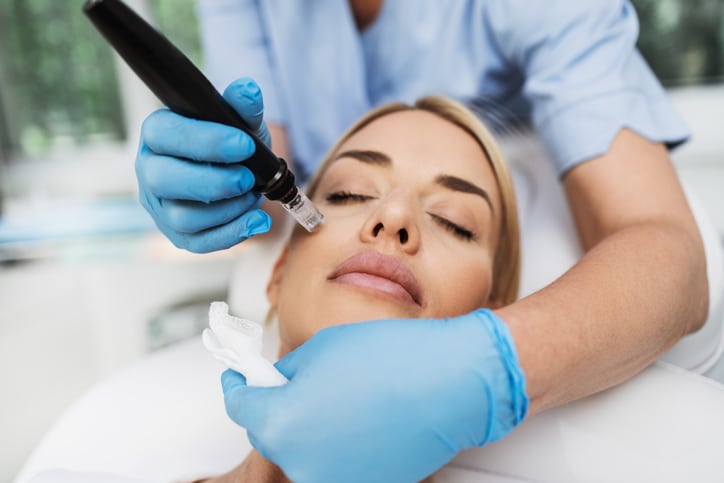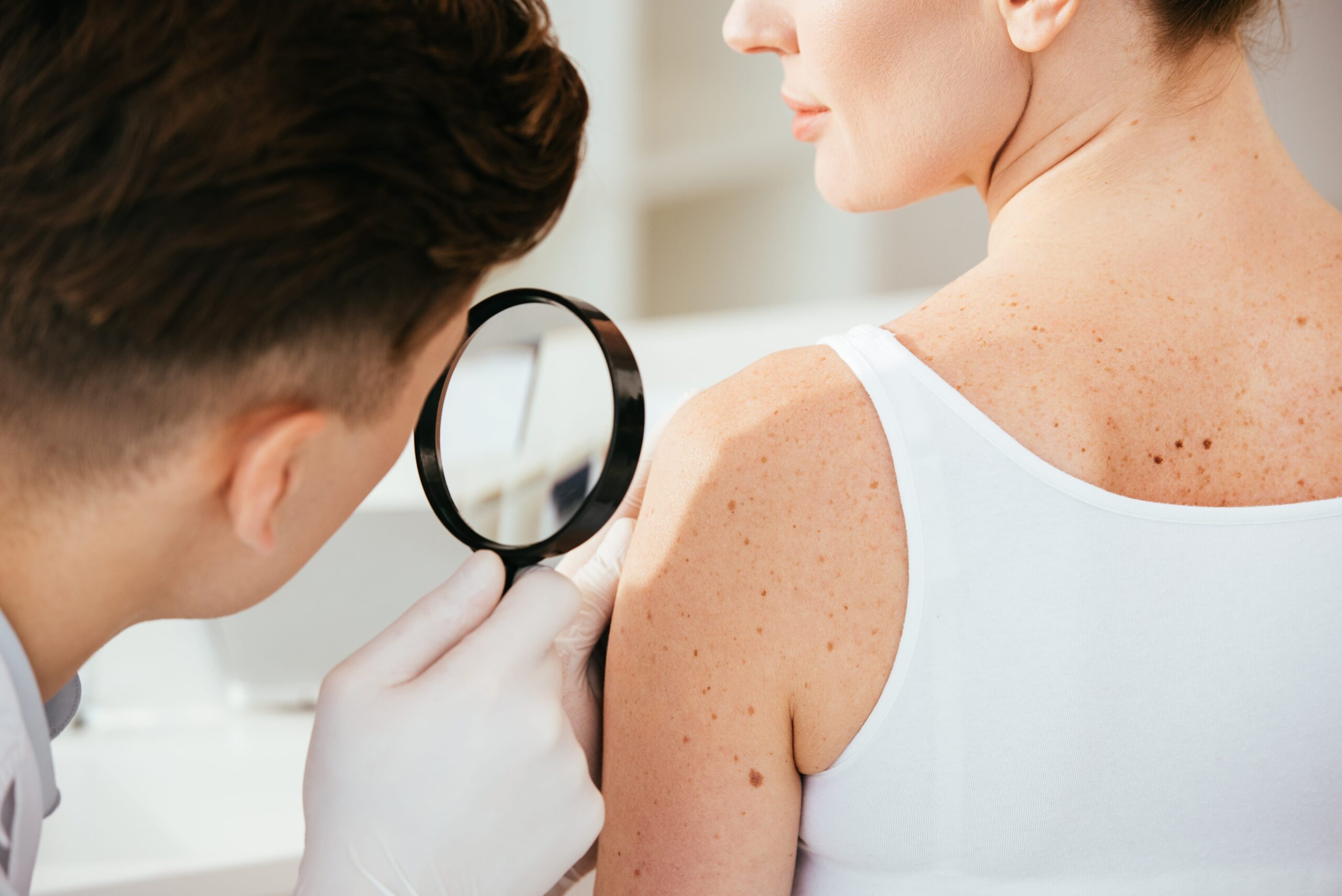Mohs surgery, also known as Mohs micrographic surgery, has become a cornerstone in the treatment of skin cancer, offering high cure rates for many forms of skin cancer, including basal cell carcinoma and squamous cell carcinoma.
Developed in the 1930s by Dr. Frederic Mohs, it has since been refined into a highly precise and effective procedure. If you or a loved one is preparing to undergo Mohs surgery, understanding the process and what to expect can help alleviate some of the anxiety associated with skin cancer treatment.
Mohs dermatology surgery is a specialized, tissue-sparing technique that aims to remove all the cancerous cells while preserving as much healthy tissue as possible. This precision distinguishes Mohs from other surgical methods, making it especially suitable for treating skin cancer in cosmetically sensitive areas like the face.

The Advantages
- High Cure Rates: Mohs boasts a 98-99% cure rate for primary basal cell carcinoma.
- Precision: It targets only cancerous tissues, reducing damage to healthy skin.
- Immediate Results: Tissue is examined on-site, meaning patients know if all the cancerous cells have been removed on the same day.
- Scar Minimization: It leaves the smallest possible scar.
Skin Conditions Treated with Mohs Surgery And The Role Of Dermatology
Mohs dermatology surgery is a precise surgical technique valued for its success in treating specific types of skin cancer. While it has its roots in oncology, its utilization is a testament to the integral role of dermatology in managing and understanding various cutaneous malignancies. Conditions Suited for Mohs Surgery are:
1. Basal Cell Carcinoma (BCC)
BCC is the most common form of skin cancer and an ideal candidate for Mohs surgery. It often appears as a slightly transparent bump on the skin, though it can take on other forms. BCCs are slow-growing and proliferate mainly on areas of the skin exposed to the sun. Given BCC’s localized nature, Mohs surgery is especially effective at ensuring complete cancer removal while optimizing cosmetic outcomes.
2. Squamous Cell Carcinoma (SCC)
The second most common form of skin cancer, SCC, is known for its scaly or crusty appearance and can develop on any part of the body, although it is more prevalent in sun-exposed areas. Mohs is particularly useful for SCC with a high risk of recurrence or located in high-risk or functional areas where maximum tissue preservation is desired.
3. Melanoma
Traditionally, melanoma was not treated with Mohs, but in recent years, surgeons have adapted the technique for certain types of melanomas, especially those in situ (confined to the top layer of the skin). In these cases, Mohs may be used to ensure clear margins while preserving as much tissue as possible.
4. Other Rare Tumors
Mohs may sometimes be considered for other less common skin tumors, including dermatofibrosarcoma protuberans, extramammary Paget’s disease, or microcystic adnexal carcinoma, especially when preserving surrounding healthy tissue is paramount.
Squamous cell carcinoma, basal cell carcinoma, and melanoma may sound like complicated medical jargon, but they represent common skin conditions wreaking havoc worldwide. Skin cancer, birthed from mutations in the skin’s DNA, poses a serious and growing threat. But dermatology, and specifically Mohs Surgery, has turned the tide.
The Dermatologist’s Role in Mohs Surgery
Dermatologists specialize in skin, hair, and nail diseases and thus are the front-liners in diagnosing and managing skin cancers. A dermatologist is typically the first to suspect and diagnose skin cancer during routine examinations or after a patient presents with concerning lesions. They perform biopsies and interpret results to determine the type of skin cancer and its stage.
It is also the role of the dermatologist to decide if Mohs surgery is the appropriate treatment option based on the type, size, location, and depth of the skin cancer, as well as considering the patient’s overall health. Dermatologists who perform Mohs surgery have undergone rigorous additional training to become skilled in the surgical procedure and interpret the complex histopathology of skin cancers.
Dermatology isn’t just cosmetic; it’s preventative, detective, and restorative. Through procedures like Mohs Surgery, dermatology offers solutions, assurance, and hope—even when skin conditions, like cancer, try to cast a shadow.
Mohs Micrographic Surgery: An Innovative Solution To Fight Skin Cancer
Mohs surgery marks a turning point in surgical dermatology services. The technique is a standout, boasting the highest cure rate for skin cancers such as basal cell carcinoma (BCC) and squamous cell carcinoma (SCC). Here’s the rundown on how Mohs revolutionizes the fight against skin cancer:
- Precision: Mohs surgery targets cancerous tissue while preserving much healthy skin. A Mohs surgeon immediately removes a thin layer of skin and examines it under a microscope.
- Stages: If cancer cells linger, the surgeon removes another layer of tissue. This process repeats until the area is cancer-free, ensuring complete tumor removal.
- Conservation: Unlike traditional excision, Mohs spares the most healthy tissue, reducing the need for extensive reconstruction or skin grafts.
Differences to note:
- Traditional Methods: Typically involve removing a larger amount of skin and waiting days for lab results.
- Mohs Technique: Offers on-the-spot microscopic examination, reducing the guesswork and multi-day stress.
Advantages of Mohs:
- Local Anesthesia: It numbs the area, keeping you awake but pain-free.
- Outpatient Procedure: Performed in a Mohs unit or dermatologist’s office, you go home the same day.
- Low Recurrence: Mohs has the highest success rate in completely removing certain types of skin cancer.
Mohs isn’t just treating cancer; it’s ensuring patient satisfaction with a thorough process, minimizing scars, and offering peace of mind. That’s dermatology and Mohs—pioneered by Frederic Mohs—offering hope and a concrete path to beat skin cancer.
What To Expect During The Mohs Surgery
True to its name, dermatology plays a detective with your skin. When skin conditions crop up, Mohs micrographic surgery is the winning chess move.
Before the Surgery Procedure
Preparation is key in any surgical procedure, and Mohs is no exception. You’ll meet with your dermatologist to discuss the surgery, your medical history, and any medications you take.
Your physician may advise avoiding certain medications or supplements that can increase bleeding. Avoid any skin irritation or sunburn in the days leading up to the surgery. Because the process can be lengthy, bring a book, tablet, or another form of entertainment for the waiting periods.
Let’s map out the step-by-step process of a Mohs surgery:
- Pre-Surgery: Start with good skin care. Keep the skin clean and to be ready for your dermatologist. Discuss any concerns with your Mohs surgeon—knowledge quells anxiety.
- Anesthesia: The surgeon numbs your skin with local anesthesia. Rest assured, you’ll stay awake but won’t feel a thing.
- First Layer Removal: The Mohs surgeon removes the visible cancer and a thin layer of surrounding skin.
- Analyzing: Using a microscope, the surgeon checks the removed skin for cancerous cells—a razor-sharp comb-through to find lurking enemies.
- Layer by Layer: If cancer cells persist, the surgeon removes another layer of skin and repeats the analysis. This cycle endures until there’s no trace of cancer.
With Mohs surgery in dermatology, you get a calculated, precise technique against skin cancer, with your dermatologist employing a microscope to ensure no cancer cells elude capture.
The dermatologist’s motto during Mohs? Leave no cell behind!
Post-Mohs Surgery: The Dermatology Follow-up
Gone are the days of ‘in-and-out’ surgical procedures. Today, your journey with the Mohs surgery in dermatology doesn’t end in the operating room.
Here’s why post-Mohs dermatology follow-up is crucial:
- Monitoring: Your Mohs surgeon traces healing, assuring no recurrence of skin cancers like basal or squamous cell carcinoma.
- Personalized Skin Care: Dermatology champions personalized skin care. Your dermatologist tailors skincare regimens to expedite wound healing.
- Detect Potential Conditions: Routine check-ups help your dermatologist pick up and treat any potential skin conditions before they snowball.
How to stay on top of your post-Mohs skin care:
- Inspect Regularly: Regularly monitor your skin and note changes. After battling cancers such as squamous cell or basal cell carcinoma, vigilance is paramount.
- Meet Your Dermatologist: Schedule regular appointments with your Mohs surgeon. Your skin cancer history necessitates frequent check-ups.
- Use Sun Protection: Shielding your skin from the sun aids in healing and decreases the risk of future skin cancer.
Dermatology doesn’t just treat skin cancer; it also ensures your skin stays in top shape even after the surgery. It’s a thorough service – from the micrographic precision of Mohs to meticulous after-care.

Why Mohs Surgery: The High Cure Rate
Dermatology is the epitome of skin vigilance, and Mohs surgery–with its stellar cure rate–is the ace up its sleeve. Here’s how Mohs surgery dominates the fight against skin cancer:
- Success Rates: Mohs has unparalleled cure rates, reaching up to 99% for primary basal cell carcinoma and 94% for recurrent cases.
- Tissue Conservation: It spares the most healthy skin, minimizing scarring and lowering reconstruction needs.
- Minimized Recurrence: Mohs surgery is a one-and-done treatment for many, with recurrence rates significantly lower than those of conventional methods.
Beat skin cancer with these crucial steps:
- Early Detection: The sooner you find skin cancer, the higher the odds of successful treatment through Mohs surgery.
- Dermatology Visits: Consistent check-ups with your dermatologist foster proactive skin health and open dialogue.
- Skin Self-Exams: Stay watchful by performing regular skin self-checks for abnormalities, such as irregular moles, and report concerns to your dermatologist.
- Sun Protection: Always wear sunscreen and protective clothing to reduce sun damage and decrease the risk of skin cancer.
It’s normal to feel anxious or stressed about having cancer and needing surgery. Seek support from loved ones or support groups, and discuss any fears you have with your medical provider.
Mohs surgery represents a significant advancement in dermatological treatments, combining meticulous technique with patient-focused care. Patients can face the treatment with confidence and calm by understanding what to expect from the process.
Remember that every patient is unique, and it’s important to follow the advice your dermatologist or Mohs surgeon gives. With the right preparation and care, you can look forward to the positive outcomes that Mohs surgery can provide.



